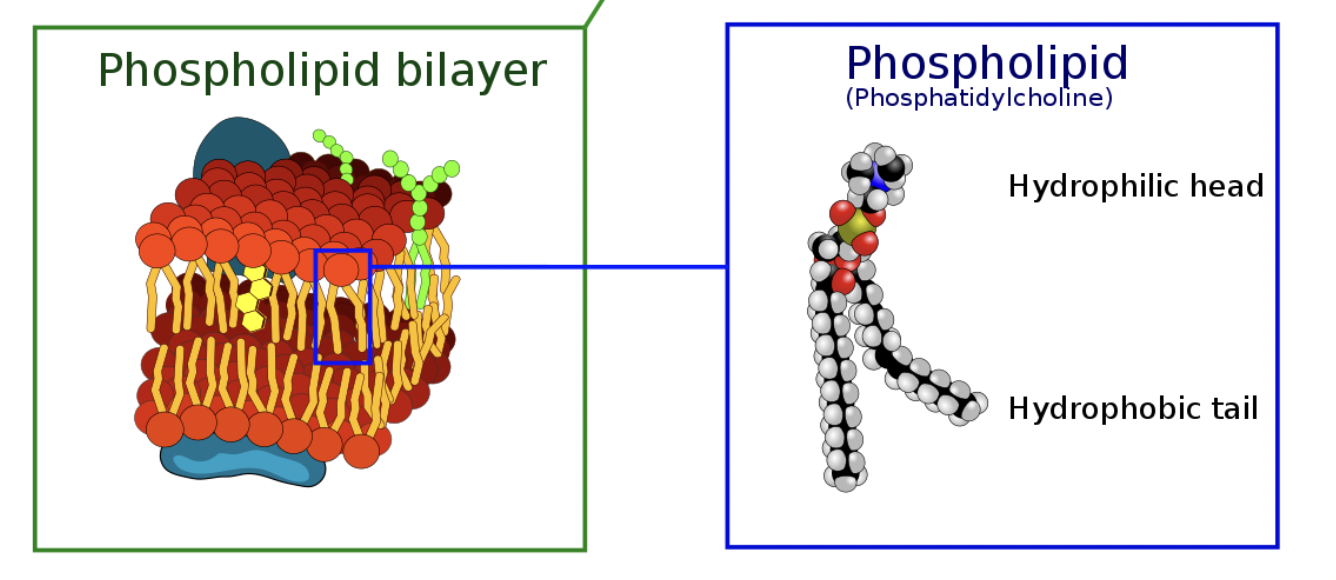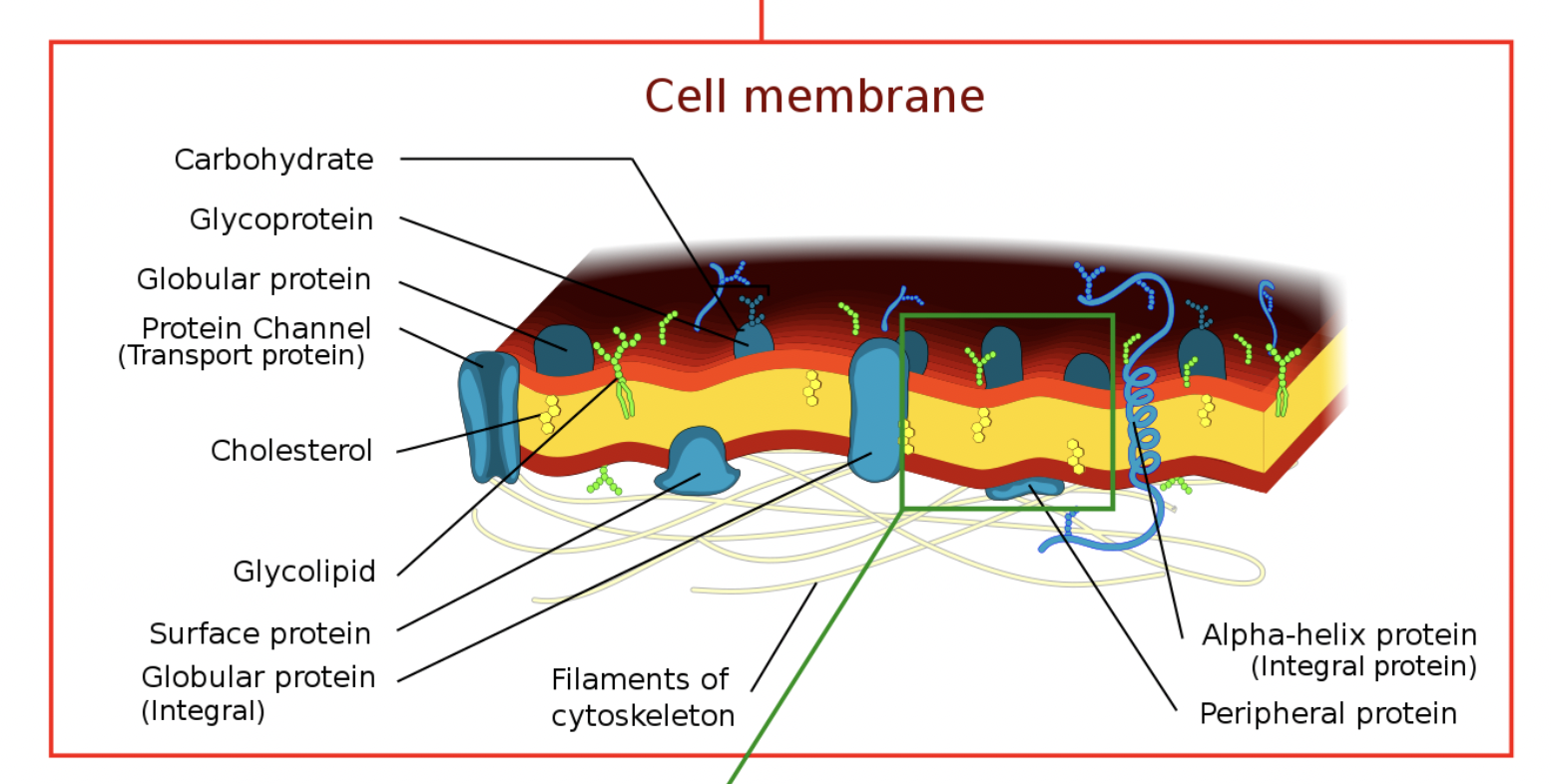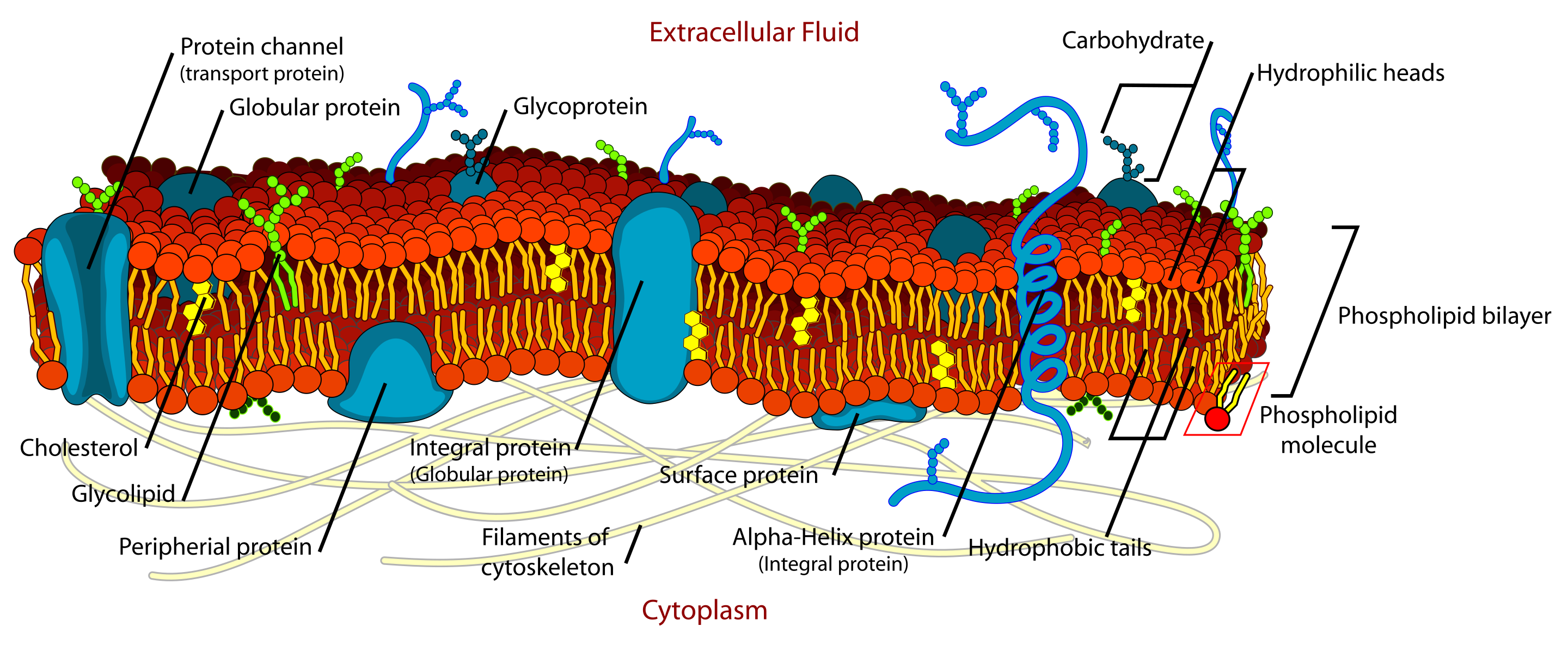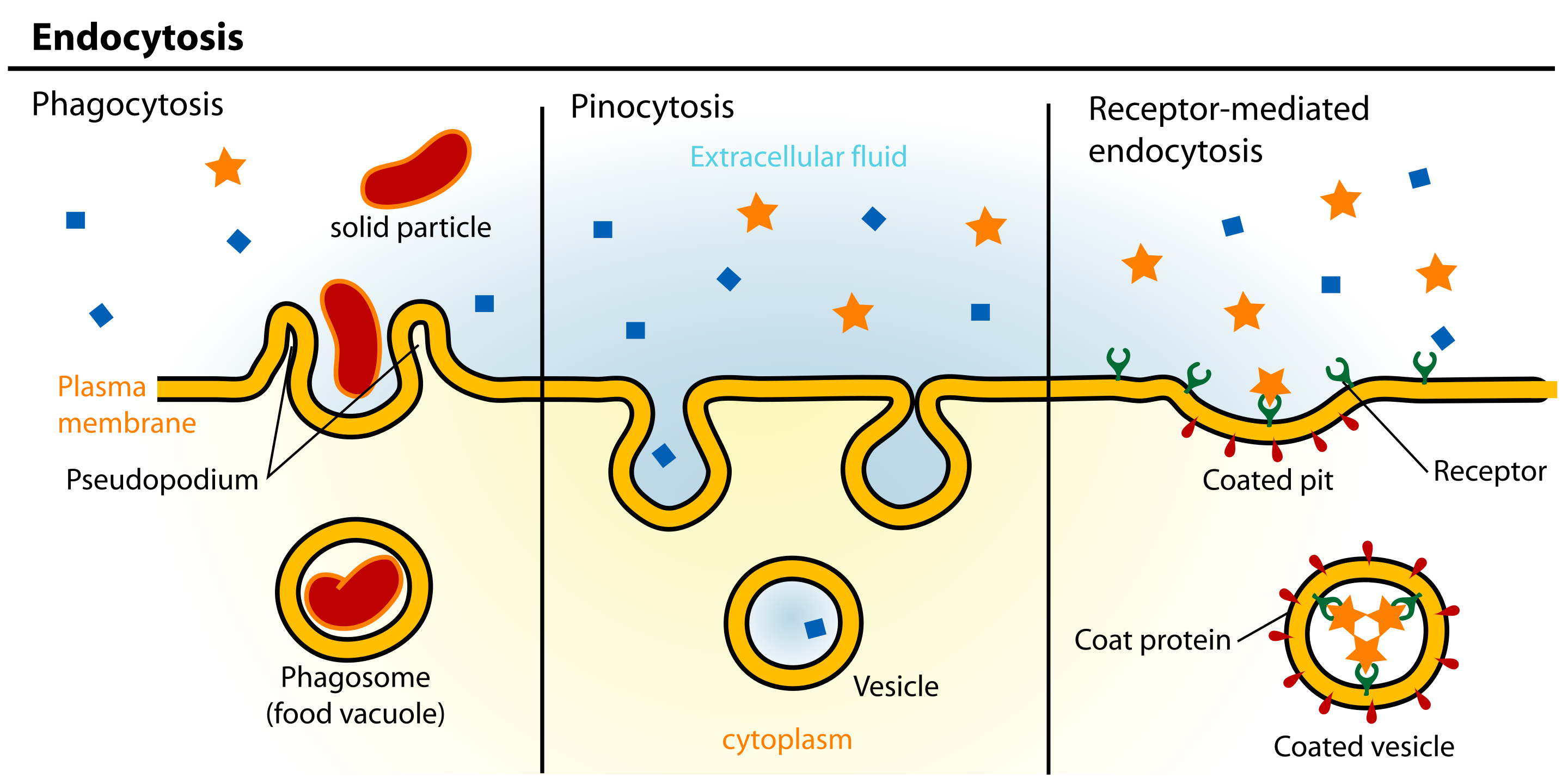S
Saarah Hasan
Biology 🧍
13 resourcesSee Units
Structure of Eukaryotic Cell Membranes
Cell membranes are essential features of ALL cells (yep, both prokaryotic and eukaryotic cells have them). They are selectively permeable barriers, allowing the passage of oxygen, nutrients, and wastes. Cell membranes are among the reasons why cells can interact with the extracellular environment and other cells without going haywire. 😄
Membrane Structure 🏭
So, what are cell membranes made of? Phospholipids! They consist of a hydrophilic (water-loving) head with a phosphate group and a hydrophobic (water-fearing) tail with two (2️⃣) fatty acids. These phospholipids interact to form a phospholipid bilayer, with the hydrophilic heads facing outwards and hydrophobic tails inwards (away from water). The membrane is held together mainly by weak interactions between the hydrophobic tails. 😌

Here's another distinguishing characteristic between "hydrophobic" and "hydrophilic":
- Hydrophobic and nonpolar molecules CAN dissolve in the lipid bilayer and pass through the membrane rapidly and efficiently. ✅
Fluidity of Membranes 💦
Membranes have to be fluid to function correctly, and they need to allow the exchange of nutrients, proteins, signaling molecules, and a whole bunch of other stuff for the cell to work. Animal cells use the steroid cholesterol to maintain the fluidity of membranes. Cholesterol has a buffering effect on membranes: at average temperatures, they reduce membrane fluidity, and at low temperatures, they hinder solidification. 💃
However, in plant cells, related steroid lipids (and NOT cholesterol) are used to buffer membrane fluidity. 🌿
Another thing to think about with the fluidity of membranes is whether the membrane is more composed of unsaturated fatty acids or saturated fatty acids. Membranes rich with unsaturated fatty acids will be more fluid because unsaturated fatty acids prevent packing. On the other hand, saturated fatty acids pack together, so those membranes are going to be less fluid. 🥫
Membrane Proteins & Their Functions 💪
Proteins are among the other significant components of the cell membrane. There are three types of proteins in the cell membrane:
- Peripheral proteins — bound to the surface of the membrane
- Integral proteins — penetrate the hydrophobic region (remember: water-fearing 😲) of the lipid layer

The main functions of these proteins within the cell membrane include:
- 🚆 Transport — think active vs. passive
- 🗣 Signal transduction — communication with other cells and the environment surrounding the cell
- ❗ Cell-cell recognition — really important in cell sorting during development
- 🤝 Intercellular joining — remember gap junctions and tight junctions?
- 💀 Attachment to the cytoskeleton and extracellular matrix
Membrane Carbohydrates & Cell-Cell Recognition 👋
How do cells recognize each other? By binding to molecules on the plasma membrane's surface that faces the extracellular fluid! Two types of membrane carbohydrates facilitate cell-cell recognition:
- 🔗 Glycolipids — Membrane carbohydrates covalently bonded to lipids that facilitate cellular recognition
- 🧪 Glycoproteins — Membrane carbohydrates covalently bonded to proteins that serve as receptors for chemical signals
These membrane carbohydrates differ among species, individuals, and cell types with an individual. 🦓
As a recap, here’s a diagram of all the components of the cell membrane:

Bulk Transport Across the Plasma Membrane 🚜
Cells use bulk transport to move large particles and macromolecules across the membrane. There are two types of bulk transport:
- 📤 Exocytosis — transport vesicles coming from the cis side of the Golgi apparatus go up to the membrane, fuse with it, and release their content outside the cell
- 📩 Endocytosis — the cell takes in materials by forming vesicles from the plasma through an inward folding. There are 3 main types of endocytosis we should know:
- 🍔 Phagocytosis: cellular “eating” of macromolecules, other cells, etc.
- 🥛 Pinocytosis: cellular “drinking” of extracellular fluid and dissolved solutes
- 🙏 Receptor-mediated endocytosis: receptor proteins on a cell's surface recognize specific substances that need to be taken in, which let a cell get bulk quantities of specific substances.
- 📺 Channel proteins — have a hydrophilic channel (examples: aquaporins, gated ion channels)
- 👐 Carrier proteins — bind to molecules, change shape, and shuttle them across the membrane (example: glucose transporter)
- Facilitated diffusion is a type of passive transport that gets a little bit of help from channel proteins. It’s considered passive because the substance is still moving down its concentration gradient, which requires NO energy.

A Little More Information About Passive vs. Active Transport 🏫
Before we get into active and passive transport, let’s talk more about transport proteins (proteins that help get substances across the cell membrane). Transport proteins are specific for the substances they help get across the membrane and include:
Passive transport is the diffusion of a substance across a membrane with ZERO energy investment because we’re moving it DOWN its concentration gradient! Even though each molecule moves randomly, the substance as whole moves down its concentration gradient. 😴

Active transport is the moving of a substance across a membrane with an energy investment! Why does it require energy? Because we’re moving substances AGAINST their concentration gradient. All transport proteins involved in active transport are carrier proteins. 🏃♂️

🤝Connect with other students studying biology with Hours
Browse Study Guides By Unit
🔬Cells
⚙️Biological Processes
🧍Human Body Structures
👨👩👦Genetics
🐒Evolution

Fiveable
Resources
© 2023 Fiveable Inc. All rights reserved.